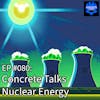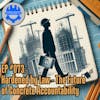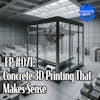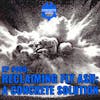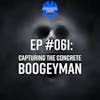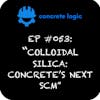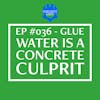EP #072: GPR - Enhancing Concrete Sawing & Drilling Safety
In this Concrete Logic Podcast episode, Seth interviews Dave Mulcahey from GPRS about concrete sawing and drilling technology and the importance of safety in the industry. They discuss the major technology for scanning concrete: ground penetrating radar (GPR).
Dave explains that GPRS uses GPR to locate post-tension cables, electrical conduits, and rebar in or below concrete to ensure safe sawing and drilling. They also talk about Concrete Sawing and Drilling Safety Week, an annual event dedicated to promoting safety in the industry. Dave shares the key steps and precautions that workers should take to avoid accidents and injuries. They discuss the process of scanning concrete, the limitations and applications of GPR, and the integration of GPR data into building information models (BIM).
Dave emphasizes the importance of communication and collaboration between project managers and contractors to ensure safe and efficient drilling and cutting. They also address common safety issues, such as slips, trips, and falls, and exposure to silica dust.
Takeaways
- Ground penetrating radar (GPR) is a technology used to scan concrete and locate post-tension cables, electrical conduits, and rebar.
- Concrete Sawing and Drilling Safety Week is an annual event that promotes safety in the industry and educates workers on the dangers and precautions of concrete cutting and drilling.
- Communication plays a crucial role in scanning concrete, consulting contractors, and ensuring the safe execution of drilling and cutting.
- GPR technology provides a cross-sectional view of the concrete, allowing workers to identify targets and plan drilling and cutting accordingly.
- Silica dust exposure is a significant concern in the industry and measures should be taken to minimize exposure and protect workers' health.
Chapters
00:00 Introduction and Ways to Support the Podcast
02:29 Introduction to Concrete Sawing and Drilling Technology
04:24 Concrete Sawing and Drilling Safety Week
09:07 Process of Scanning and Safety Protocols
12:12 Overview of Ground Penetrating Radar (GPR) Technology
15:57 Limitations and Applications of GPR
17:19 Integration of GPR Data into Building Information Models (BIM)
20:32 Role of GPRS Project Managers
22:13 Recommendations for Cutting and Drilling
23:51 Concrete Safety Week and Common Safety Issues
25:48 Addressing Silica Dust Exposure
27:18 Participation in World of Concrete
28:37 Contact Information and Conclusion
***
Did you learn something from this episode? If so, please consider donating to the show to help us continue to provide high-quality content for the concrete industry.
Donate here: https://www.concretelogicpodcast.com/support/
***
Episode References
Guest: Dave Mulcahey | GPRS | dave.mulcahey@gprsinc.com Guest Website: https://www.gprsinc.com, https://www.gp-radar.com/safety/concrete-safety-week
Producers: Jodi Tandett, Jace Stocker, Michael Butler
Donate & Become a Producer: https://www.concretelogicpodcast.com/support/
Music: Mike Dunton | https://www.mikeduntonmusic.com | mikeduntonmusic@gmail.com | Instagram @Mike_Dunton
Host: Seth Tandett, seth@concretelogicpodcast.com
Host LinkedIn: https://www.linkedin.com/in/seth-tandett/
Website: https://www.concretelogicpodcast.com/
LinkedIn: https://www.linkedin.com/company/concrete-logic-podcast
[00:00:00] Seth: And welcome to another episode of the Concrete Logic Podcast. And today I have Dave Mulcahey with GPRS. We're going to talk about concrete sawing and drilling and the technology to use to make it safer. So Dave, thanks for joining us. And as I've been doing to you guys, the last I don't know, it's getting up there handful of episodes is sharing with you the way you can support the podcast.
So there's three ways. First of all, if you learn something out of the podcast today, as I'm talking to Dave, please share it with a colleague or someone you think would get some value out of the podcast. That's the first way. The second way. Is no one's done this yet. So if you do this, you'll be the first, well, I can, I can't say that someone actually came on one time and left me a very nice voicemail, but anyways, if you go to the website and they're at the homepage in the bottom right hand corner, there's a microphone, you can record a voicemail to me and give me an idea for a guest or a topic, or give me some feedback on the on the podcast.
And if you want. In the voicemail, if you want me to play it on an episode, I will play it on episode. So just let me know. And then the 3rd way is in the upper right hand corner on the homepage. There is a donate button. So if you get some value of our discussion today, and you think it's worth something, you go up, you go to that homepage, hit that donate button and you can donate any amount you want to.
There's no set amount. You put whatever you want in there. And if you do that. I've failed to mention this, but when you do that, you get listed as a producer of the next episode that's released. So your name will come out with that episode. And I'm going to work on a webpage where I'm going to list everybody that's donated to the show.
And like I said, your name will be Credited to that particular episode, and you can put it on LinkedIn, say, hey, I produced a podcast episode and I'll back you up. I'll say, hey, they did. So try it out. Those three things out and that's it. So Dave, we can get started on the topic of today. Like I mentioned, we want to talk about concrete drilling and sawing and the technology that we can use to make it safer.
So what is that technology?
[00:02:39] Dave Mulcahey: Well, let's start with the technology. Like you said, there's a really. Two major technologies for scanning concrete we like to say. So, scanning concrete, finding out what's either in concrete or directly below it. The old school technology of x ray where you're putting a plate on the bottom side of a slab, elevated slab and a plate on the top.
And you actually use shooting x rays to create an image or a picture. That's the older technology has been around for a little while. What we use is ground penetrating radar. We start our business started in 2001 with our single owner in Toledo, Ohio bought a system, bought a ground penetrating radar system and was scanning concrete to locate post tension cables, electrical conduits, rebar, pretty much anything in or directly below the concrete to allow for safe song and drilling to.
not hit those things in the concrete.
[00:03:33] Seth: Yeah. Cause usually isn't that technology prior to that? Was it used for like finding utilities and things like that? Or was it always used for concrete?
[00:03:43] Dave Mulcahey: Well, I think again, there's probably some fact checkers or GPR gurus that might want to come back to me, but initially GPR was a military technology.
I think they were looking for either. Unexplosive ordinances, landmines, different things like that. Commercially, once they started applying it, it went for utility locating and then, of course, into the concrete scanning. So, yeah, locating underground objects or anything subsurface is really what ground penetrating radar is all about.
Got it.
[00:04:14] Seth: Huh? And then you guys started in Ohio. This is another concrete company started in Ohio. It seems like everything concrete starts in Ohio. But anyways so yeah, so you guys talk about this a lot the concrete sawing and drilling safety. You actually have a whole week dedicated to it
Can you tell us a little bit about that?
[00:04:35] Dave Mulcahey: Concrete Sawing and Drilling Safety Week is I think we've sponsored it for three or four years now. We've been a lead sponsor where we're going to job sites and really sharing the message of safety on when a blade's hitting the concrete, when a drill bit's hitting the concrete, what are the steps we're going to take to avoid injury and avoid fatalities as well.
And it's something that we've Really grasp kind of wrapped arms around and really getting the idea. Let's get the message out to as many people as possible. I think over the last. Three years, we're up to some 20, 000 workers that have been educated on really the message that we're trying to put out there.
[00:05:16] Seth: So what do you guys I guess cover in that? What's the big thing that you tell these guys to look out for?
[00:05:22] Dave Mulcahey: Well, I think the big things that we want to first point out, okay. There, there are some major. Incidents that could happen, right? You could have slips, trips and falls, you could have pinch points, you could have a structural damage when you hit post tension, you can have electrical shock from hitting electro.
So we want to point out that there's dangers and I think a lot of people know that, but maybe you forget throughout time, I forget that when I'm saw cutting, there could be something that I don't see. And the one thing we were willing to educate is when we want to challenge every employee on that job site.
What is your process? What is your safety process that you're going through every time a drill bit sits in the concrete? What are you going to do to make sure is not there or is there? What safety precautions are you going to take? PPE making sure that we've cleaned up, all of that kind of stuff. And then we want to really walk them through, now that they've thought about what their process is, we want to walk through what are those five steps.
Those 5 key steps that everyone should take before that blade hits the concrete and that includes scanning the concrete. That includes going through and walking that site with team members or with competent person, and then ultimately discussing those findings before that blade is the concrete.
[00:06:36] Seth: so you go through what they're cutting, what are the possible dangers and how to reduce those dangers or risks, right? You got it. Yeah. All right. All right. I'm on it Can you walk us through these safety seminars that you guys put on?
could you give us an idea of, how you would set something up like you're going to go talk to some concrete contractor who does a lot of cutting of walls or maybe concrete decks, that's what I'm familiar with doing.
I was sharing with Dave before we hit record. I usually in my experience with GPRS is you call these folks when you're in trouble when you forgot to do something like you left. You forgot to leave an opening in a wall or in the deck and you're and there's it's gotta be there.
There's no getting around it. You've checked with the architect. The structural engineer the mechanical engineer, and you say, hey we forgot to do this box out. Is there another way to do whatever was supposed to go through that wall or that floor? Is there another way for us to handle it?
And they say, no, he should have put the opening there. And then you're like, crap. So we got to cut it. Then you want to know what's in there before you go in there and cut it. And that's when you call the GPRS folks. So tell us about when you get that, phone call and someone reaches out to GPRS. Could you tell us how you would walk through those safety procedures or protocols that you would do?
[00:08:04] Dave Mulcahey: Of course. Yeah. And that's it's funny. You mentioned that's exactly typically the phone calls we're getting. And if we think about this as a high rise build out 30, 40 floors that are getting built out a lot of times a plumbing can be kicked out of place or missed all together.
Or funny enough, the owner decides that the 15th floor we want to switch out around all of the plumbing for floors 16 through 40, and they've already all the decks have already been poured. So a lot of those situations happen where they say, okay, plans changed. Something was missed. We need to scan the deck so we can clearly punch a hole through this without hitting anything dangerous.
Again, that's electrical conduits. That's post tension cables. And a lot of times it's, it could be the structural rebar, the structural engineer saying, hey, we can't cut through any. Main bars here that are involved with beams or anything like that. So, that's where we come in and scan that now to point the step by step procedure that we're going to take on a job site.
1st and foremost, we want to figure out, tell us more about this slab. What are we dealing with? Is it post tension? Do we know of any live electrical lines in this deck? If it is not a new build, it could be a tenant improvement. It could be something that's been up for many years and there might be information.
There might not be information on what is going on in that deck. So we're going to try to do a little research. 1st, next thing we're going to do is we're going to really walk that job site usually on an open slab. You can see there's a lot of conduits that are coming in and out of this lab. Well, that might be an indication that there is a conduit running in the deck, so that's going to give us a lot more information before we actually pull the scanner out and start scanning the deck.
So another indication of that is I always think of a parking garage. If you look up and lights on the ceiling of a parking garage. Well, sometimes you'll see conduits running to and from them, and sometimes you won't. So, if you know that there's no conduits running to and from those lights, that means there's electrical running through the deck.
So, a lot of indications we'll get on a job site just from walking and getting a lot more information. Then we're going to go ahead and apply the technology. We're going to pull out that scanner. We're going to scan that deck. We're going to mark out. This is where our obstructions are. Here's rebar.
Here's post tension. We're going to indicate each 1 of those items that we find or targets. We'd like to call them targets in our industry. Those targets that we find and lay those out on the deck. Then 1 of the most important key points is we need to communicate that. Okay. Directly with who is our site contact and who is going to be the person holding that drill bit as long as that information gets to the person holding the drill bit, holding the saw blade.
We feel comfortable that's going to be a smooth job. It, that little miscommunication, funny enough, is where a lot of incidents happen because we might lay it out perfectly and they say, oh, I, it was marked here in red, that's why, that's where I cut. Well, the red meant that was bad. Don't go there. You should have gone where the big green box was.
[00:11:02] Seth: Oh, yeah, that's that would be crucial to know. So, what's that the GPRS, the actual machine? What does that look like? And can you explain what that is?
[00:11:15] Dave Mulcahey: So a GPR machine again, we keep using the acronym, but the GPR, ground penetrating radar our company ground penetrating radar systems.
So it's an important tool. it's put in the name of the company. the GPR Looks a different part of the manufacturer. A lot of manufacturers it looks like some type of handheld cart or buggy That you're rolling across the concrete and then some type of visual display So you got maybe an iPad or some type of monitor where you're looking at what the antenna which is the handheld is picking up So as you're rolling this across the ground Again, there's a lot of people that know a lot more about GPR the technology than me, but I'll give the layman term for it. So what we're doing is we're rolling this cart across the ground, across the concrete.
It's sending radio pulses into the concrete. And that is, and then turn bouncing back very similar to a sonar. If I'm giving the layman, I give the idea of imagine a submarine underneath the ocean. It's sending out sonar waves that's bouncing off the sea walls and allowing the submarine to understand, okay.
This is how far the seawall is how far the floor is that kind of thing. So, very similar in that technology. It's sending pulses into the concrete. Then that's bouncing back up to the antenna saying, okay, yes, there is something here. There's not something here and then we're able to follow those targets again.
I mentioned targets. We'll follow those out and mark those on the deck. So you can see exactly what we found. And when
[00:12:49] Seth: you, I guess when you run the GPR machine across there, it just ignores the concrete. How's that? Do you know how that works?
[00:12:57] Dave Mulcahey: It sees the concrete and that's the great thing. So you actually will calculate the machine to see.
Okay. The concrete is the medium. And if it's either greener, concrete or drier concrete, you can adjust the medium up and down. So the funny thing is the GPR technology, it reacts really strong to air in a sense where it feels like the. Air is such a difference compared to concrete. So that's why it's a really good tool for telling how thick the concrete is.
So let's say an elevated slab, if it's eight inches thick, as we go across, we can see exactly where that turns to air because it reacts so much differently once it gets to air. So you got the consistent medium of concrete, and then everything in between that, it will shine off as, hey, something's different here.
So it could be a rebar, post tension, conduit, that kind of thing. So that's why the tool really is effective.
[00:13:50] Seth: Oh, that's pretty cool it. So, and then as it, those readings bounce off there, it creates an image on the, monitor that you're carrying.
[00:14:02] Dave Mulcahey: Yeah. And that image again I like to speak in layman terms more often, but I like to say we're getting a cross section.
So, when we take a scan across the deck with said GPR, the antenna, it's creating what if you took like a layered cake and took a slice that layered cake and then lifted that out, that's what you're seeing on that. On that monitor, you're actually seeing a cross section of, okay, here's how thick the slab is down to 8 inches.
And then here's all of the targets or indications that you got when you took that scan across the concrete.
[00:14:35] Seth: And is there any limitations to it? Like how thick can the concrete be or?
[00:14:41] Dave Mulcahey: Yeah, again, that does play into, there's always the If, if, when scenario if there, if the deck is cured and not having any issues as far as green decks, you won't penetrate as far because there's still moisture in that concrete, the dryer, the concrete, the more you're going to penetrate usually ground penetrating radar, 16, 18, we've seen up to 20 inches thick of concrete.
You can penetrate if you have access to one side of that deck.
[00:15:09] Seth: All right. So, and that's both Vertical and horizontal. So if you're doing a wall, same thing, right?
[00:15:15] Dave Mulcahey: Exactly. Yeah, we've done several walls that could be 30 inches thick. We'll just scan both sides and that way we're able to penetrate that entire thickness.
So that is, it doesn't matter if you're on a wall, a ceiling we scan ceilings all the time for anchors to go in for strut or whatever.
[00:15:33] Seth: And after you do a scan, is there a way to, whatever you scan and the information you scan, is there a way to, use the same technology as like, the BIM modeling software?
Can you drop that info in like a building information model?
[00:15:50] Dave Mulcahey: It's yeah, I'm glad you brought that up too. Previously you had mentioned that a lot of times we get called for the, oh no, something went wrong. We need to scan this so we can punch a new hole or create an opening in the wall. Like you mentioned, we're seeing far more customers get ahead of it where once they'll pour the deck and before they even plan on where the holes are going to punch, they'll have us come out and scan and create an entire Revit BIM model of that space.
And what we'll do is we'll scan that, and then we can capture all of our marks with a 3D laser camera. And transfer all of that data and you actually give you a model that's three dimensional that tells you, okay, here's where post tension cables are running. Here's a bundle of three. This is where it's dipping up and down throughout the deck.
This is where it's waving back and forth, and you can plan all of your cores and your punches because a lot of times they're building now they're building these shell and core buildings where they have no idea. What's going to be there? They're just going to build a building and eventually sell it off.
We did a job over in Los Angeles where they built the building a few years ago and Facebook came in and bought the building and said, okay, well, we're going to plan 1300 holes on this floor and 600 floors and holes on this floor. We're going to have conference rooms here. So we're going to get data electrical.
So they had no idea when they built the building, where the holes were going to be. So it was nice to have a lot of information up front.
[00:17:14] Seth: Yeah, that would be a luxury, right? People planning ahead.
[00:17:18] Dave Mulcahey: It would be far between these days. Right?
[00:17:22] Seth: Well, yeah, I think the kind of the, reuse of the office buildings that no one's using anymore.
And then them trying to convert it for other uses would keep people like you busy.
[00:17:36] Dave Mulcahey: Yeah, no, absolutely. Yeah, you're seeing a lot of old office buildings change into a lot of residential spaces. I know I'm on the West Coast, so I'm out here in California and a lot of the high rise office buildings have been transferred over to apartments or condos, which means all new plumbing needs to get pulled through.
So a lot of drilling through decks for sure.
[00:18:00] Seth: Yeah, people don't think about when you convert those things that in an office, you usually have a centralized bathroom, all the bathrooms in a row. Well, people that want to live in apartments, they don't want to share a bathroom with everybody on the floor.
So you got all that plumbing and other electrical things that need to go through there. So that's a lot of manipulating of existing structure.
[00:18:24] Dave Mulcahey: We're spoiled out here in the U S we don't want to go with that European hostile ideology of a shared bathroom, a shared shower area.
Yeah.
[00:18:32] Seth: Yeah. Not yet at least. Yeah. So, so you'd come out, do the scanning the, do you call him a technician? I guess the guy that actually goes out there and does the scanning. And
[00:18:44] Dave Mulcahey: we call GPRS, we call 'em project managers. 'cause we feel like a lot of times they're doing a lot more than scanning.
They're actually consulting the either general contractor or MEP contractor on, hey, this is what we're seeing, this is what we recommend maybe going here, and here for your holes. So we call 'em project managers.
[00:19:02] Seth: Okay, and then make a recommendation on what tool to use to make that cut or hole or drill or what's the next step after that?
[00:19:13] Dave Mulcahey: Yeah, of course. So once we've laid out where all of the targets, I keep indicating them as targets, but pretty much all the dangers that you want to avoid then we're going to try to work with the contractor to find the best spot for them to drill or cut. We want to solve their problem as much as they want to solve their problem.
So if we, if they say we need to get a four inch hole in for a drain line. Well, then we're going to try to work and indicate. Okay. This is a green box where we're saying you are going to get a clear hole for four inches and That way, they can use their drill but use their core drill and do that. Maybe they're just doing anchors Well, if they're doing anchors, we'll indicate how deep are those anchors going?
Okay, you're only going three inches great now We can indicate where's The targets are deeper. Maybe the targets are six inches deep. Well, you have no problem drilling an anchor right there. If the target six inches deep, we can tell the depth of all of those targets in the concrete.
[00:20:09] Seth: I gotcha.
Yeah, that makes sense. And then so do the layout, pick the tool. What's after that?
[00:20:18] Dave Mulcahey: Well, hopefully it's at that point we probably wash our hands and say. Good luck drilling and make sure if you drill something all the way through that doesn't drop on anyone on the floor below but that's usually where we wash our hands.
We'd like to, of course, do follow up and make sure that everything's going well, but it's funny enough. A lot of these projects were on repeatedly, right? So they get done doing anything on this floor. Hey, we'll call you back next week. We'll be back out to do the next ones. So, yeah, continuous communication with the client for sure.
[00:20:48] Seth: All right. And then so that we talked about the technology and the safety what else are we missing?
[00:20:56] Dave Mulcahey: Well, I think the big thing, well, I guess I want to mention about concrete safety week. If any of your listeners are interested and want more information, then they can go to concrete safety week.
org and get a little more information on that again. We do go to job sites. We do give that message. And I think you mentioned previously thinking this was a lengthy conversation. Usually it's only about 15 to 20 minutes. A lot of this information. Is known out there, anyone that does drill or cut concrete, they have the idea of, hey, I need to be safe when doing it, but it's good to have the reminder.
It's good to bring up here are the dangers here. How we here's how we can avoid these dangers and really keeping that on the front of the mind throughout these projects.
[00:21:42] Seth: Yeah, but what are you, what do you guys see? That maybe is a reoccurring issue or unsafe practice that you guys see out there.
There's got to be something. There's a reason why you all do this every year.
[00:21:57] Dave Mulcahey: Yes, some of the most common issues the most common issue on a job site is slip, trips and falls. And a lot of people when you're thinking, hey, we're drilling concrete, you're not thinking, hey, I'm going to slip, trip or fall.
But it's amazing how much, especially wet drills or wet saws, how much of a slip slipping cause that makes. Because that mixture of silica dust and the moisture, it's like you're wearing ice skates on that concrete. And I just mentioned another big key point that we cover in Concrete Safety Week is the exposure of silica dust and silicosis.
It's something that. It's unforeseen, right? I was talking to a kind of a, an old timer that has been doing concrete forever and ever, and he used to joke about having black boogers at the end of the day, he's like, oh, those are work boogers, right? They and I'm like, well, that's you breathing in a lot of silica dust that can have some really long term negative aspects on your life and can cause silicosis in the long run.
[00:22:55] Seth: I guess a lot of folks try to avoid there's a lot of the HEPAVAC. Attachments now, which are a pain in the butt to drag around. So they do wet cutting. I just did some wet cutting at home, actually some tile cutting at home and use the wet saw, which keeps that silica dust down.
So you guys talk about all that what options you got to handle those types of concerns.
[00:23:23] Dave Mulcahey: Exactly. And we address it from both sides in Concrete Safety Week, not only from the employee side, the person using the blade, but also from the employer side, what, as a general contractor or as a MEP contractor, what can you do to help provide the training and the tools for your team to make it as easy as possible?
And then as the employee, what are some steps? It's one that no one ever thinks of is at the end of the day. Before you hop in the car, bang off your clothes. No one ever thinks about this, but they hop in their car, they crank on the AC. What are they breathing the whole way home, right? All that dust that you just took from the job site, you're breathing that in when that AC is cranking.
So even little things like that, that we try to bring up and hopefully educate someone on a job site to bring some more safety to their lives.
[00:24:11] Seth: I think it's yeah, a great awareness tool. I think companies like the one I work for. This is constantly in front of us.
But there's, I'm sure a lot of companies you work with where this is an afterthought there, they call you up and say, hey, we just, we need to get this done. We need, and then you guys are like whoa, understand what you're doing. So, no, this is great. And you mentioned you are so we're coming up on a World of Concrete.
You're going to be, you're going to be there as well.
[00:24:42] Dave Mulcahey: I'm going to be there. We've had a booth in the past and I think this year I was just going to go and enjoy the enjoy the show. I'm going to walk around. I've got one of my colleagues going to be with me. We're going to walk around, take it all in, hit some classes and hopefully do some networking while we're there.
So I guess if any of your listeners are going to be there and want to find me on LinkedIn, I'd be happy to join up, have a cup of coffee or to tell you I'm in Southern California, so I know Vegas quite well. If you want to know where the hottest tables are, maybe I point you in that direction.
[00:25:12] Seth: I don't know. There you go. So you want that usually at the end of these things, that's what I ask. Is it the best way to get ahold of you through LinkedIn or what else, what other ways are, is a good way to get ahold of you?
[00:25:25] Dave Mulcahey: Yeah, I think through LinkedIn, other than direct email, I don't know if you do post my direct contact information, but either email or LinkedIn are probably the easiest ways to get ahold of me.
[00:25:34] Seth: Yeah, we can do that. We'll put your email on there and then your website, and I'll put a link on to your concrete sawing and drilling safety week as well. So we get that. That's January 29th through February 2nd,
[00:25:46] Dave Mulcahey: We typically try to do it right.
It usually gets paired with World of Concrete. We don't want to try to share the same week. It feels like we'd be counterproductive. Everyone goes to Vegas and we're trying to train people on their job sites. So we always typically go the week right after World of Concrete.
[00:26:06] Seth: I gotcha. And that, like you said, you guys are nationwide.
You're in California, but you do this nationwide.
[00:26:13] Dave Mulcahey: Correct. Nationwide.
[00:26:14] Seth: I gotcha. All right, Dave. Well, I appreciate you coming on and sharing about GPR and the technology and how it helps us become safer when we're cutting concrete, which we all do. so Thank you, Dave. And folks, until next time, let's keep it concrete.
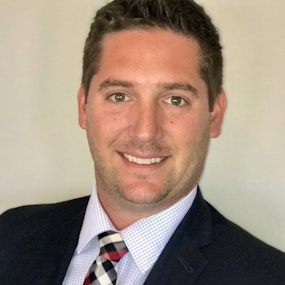
Dave Mulcahey
Director of Sales West US
In a lifelong pursuit of subsurface damage prevention, Dave Mulcahey is a third generation subsurface investigator who constantly strives to help prevent subsurface strikes. With over 16 years of direct experience in the industry dealing with utility locating, concrete scanning, video pipe inspection, and leak detection, Dave wants to continue to educate and inform the contractors of the nation on how to avoid the dangers below the surface.









